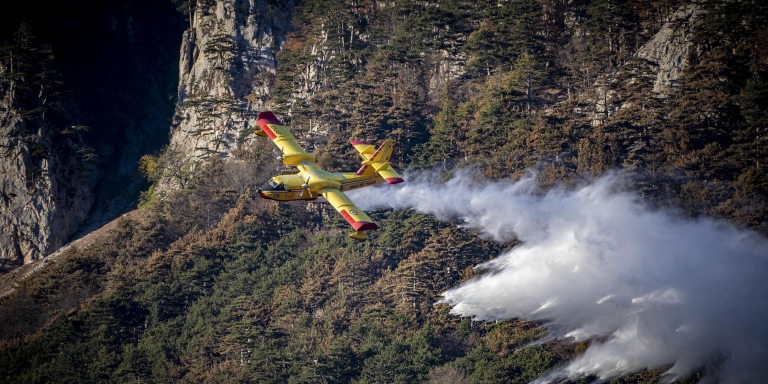
Prevention, monitoring and rapid intervention are major assets to fight against forest fires. The Moroccan National Agency for Water and Forests (ANEF), to protect the 9 million hectares of forest on its territory, has set up an action program for the prevention and control of fires that it presented on May 24. It has allocated a budget of 150 million dirhams (MDH) to this program where artificial intelligence and new technologies play a major role.
On February 13, 2020, the King of Morocco, Mohammed VI, launched the national strategy for the development of the forest estate “Forests of Morocco 2020-2030″, whose ambition is ” to curb the problem of degradation and establish a balance between conservation and development of the forest and its resources.” The creation of the ANEF is part of the roadmap of this strategy, the 1st meeting of its Board of Directors was held on April 7.
The number of fires worldwide is expected to increase in the coming years
This strategy has begun to bear fruit and in 2021, it was possible to limit the damage caused by fires in Morocco. However, a total of 3,024 hectares of forest were affected by 435 fires due to severe drought, heat wave and wind.
From January to May this year, 75 fires were recorded, compared to an average of 15 fires over the same period in the last ten years. The more frequent spring rains favored the production of highly flammable biomass.
Fouad Assali, director of the National Center for Forest Climate Risk Management, told Media 24 that scientists estimate a 30% increase in the frequency of fires in the future while 45 million hectares of forests burned globally in 2021. He also unveiled the measures of the action plan, which will build on the achievements of recent years, during this interview.
The action plan of ANEF
With a budget of at least 150 MDH, the action program of ANEF is based on several pillars, including risk analysis, prevention, monitoring and intervention, using modern technical and technological means.
Reforestation of 18,000 ha
To prevent fires, ANEF plans to:
- A public awareness campaign on fire risks.
- Intensification of preventive forestry (maintenance, reforestation) up to 18,000 hectares in high and medium risk areas (15 MDH).
- The development and maintenance of 48 water points (2 MDH) as well as the opening and maintenance of 500 fire trenches (5.4 MDH).
- Rehabilitation and opening of 325 km of tracks (45 MDH).
The action program also provides for the construction and maintenance of 23 monitoring stations for a budget of 2 MDH and 23.8 MDH to pay the people keeping watch, detecting a forest fire at its birth being crucial.
A supercomputer to analyze the risks
Predicting a fire outbreak is impossible but assessing the danger and anticipating the risk of fire to avoid it is now possible thanks to prediction tools.
With static and dynamic maps of forest fires, we can analyze the risks of forest fires and provide managers with data to define priorities: invest in infrastructure, equipment or fire protection operations in the forest environment.
This prediction system is reinforced by a supercomputer whose data is then analyzed by multidisciplinary experts.
Drones to monitor the progress of fires in hard-to-reach areas
The use of DJI 300 RTK drones, which combine a flight time of 55 minutes, advanced artificial intelligence capabilities, detection and positioning in 6 directions, will allow the collection of information on the evolution of fires. For this year, they will fly in isolated mode but will do it in simultaneous mode from next year.
Expanding the fleet of Canadairs
In late October 2021, Morocco announced the purchase of three new Canadair CL-415s. These water bomber aircraft manufactured in Canada by Bombardier Aerospace will bring the Moroccan Canadair fleet to eight aircraft, the first of which will be delivered next summer. Thus, six Canadairs will be operational, but the water shortage is a problem. The planes will have to refuel at sea and if this does not compromise the extinguishing of fires, they must be rinsed to avoid corrosion. If the weather conditions are bad, they will still be able to refuel at airports with the appropriate infrastructure. The action program of ANEF also provides for the acquisition of 15 firefighting vehicles for an amount of 22 MDH as well as the maintenance and repair of 87 vehicles of 1st intervention for 1.9M DH.
Translated from Le Maroc investit dans l’intelligence artificielle, les drones et les canadairs pour lutter contre les feux de forêts









